
Aerospace and defense company Mercury Systems (NASDAQ: MRCY) reported Q1 CY2025 results topping the market’s revenue expectations, with sales up 1.5% year on year to $211.4 million. Its non-GAAP profit of $0.06 per share was $0.01 below analysts’ consensus estimates.
Is now the time to buy Mercury Systems? Find out by accessing our full research report, it’s free.
Mercury Systems (MRCY) Q1 CY2025 Highlights:
- Revenue: $211.4 million vs analyst estimates of $202.1 million (1.5% year-on-year growth, 4.6% beat)
- Adjusted EPS: $0.06 vs analyst estimates of $0.07 ($0.01 miss)
- Adjusted EBITDA: $24.69 million vs analyst estimates of $23.05 million (11.7% margin, 7.1% beat)
- Operating Margin: -8.2%, up from -21.9% in the same quarter last year
- Free Cash Flow was $24.06 million, up from -$25.74 million in the same quarter last year
- Backlog: $1.34 billion at quarter end
- Market Capitalization: $3.05 billion
“We delivered solid results in the third quarter of fiscal 2025 that were once again in line with or ahead of our expectations, reinforcing the confidence we have in our strategic positioning and expectations to deliver predictable organic growth with expanding margins and robust free cash flow,” said Bill Ballhaus, Mercury’s Chairman and CEO.
Company Overview
Founded in 1981, Mercury Systems (NASDAQ: MRCY) specializes in providing processing subsystems and components for primarily defense applications.
Sales Growth
A company’s long-term sales performance is one signal of its overall quality. Any business can experience short-term success, but top-performing ones enjoy sustained growth for years. Over the last five years, Mercury Systems grew its sales at a sluggish 3.3% compounded annual growth rate. This fell short of our benchmark for the industrials sector and is a rough starting point for our analysis.
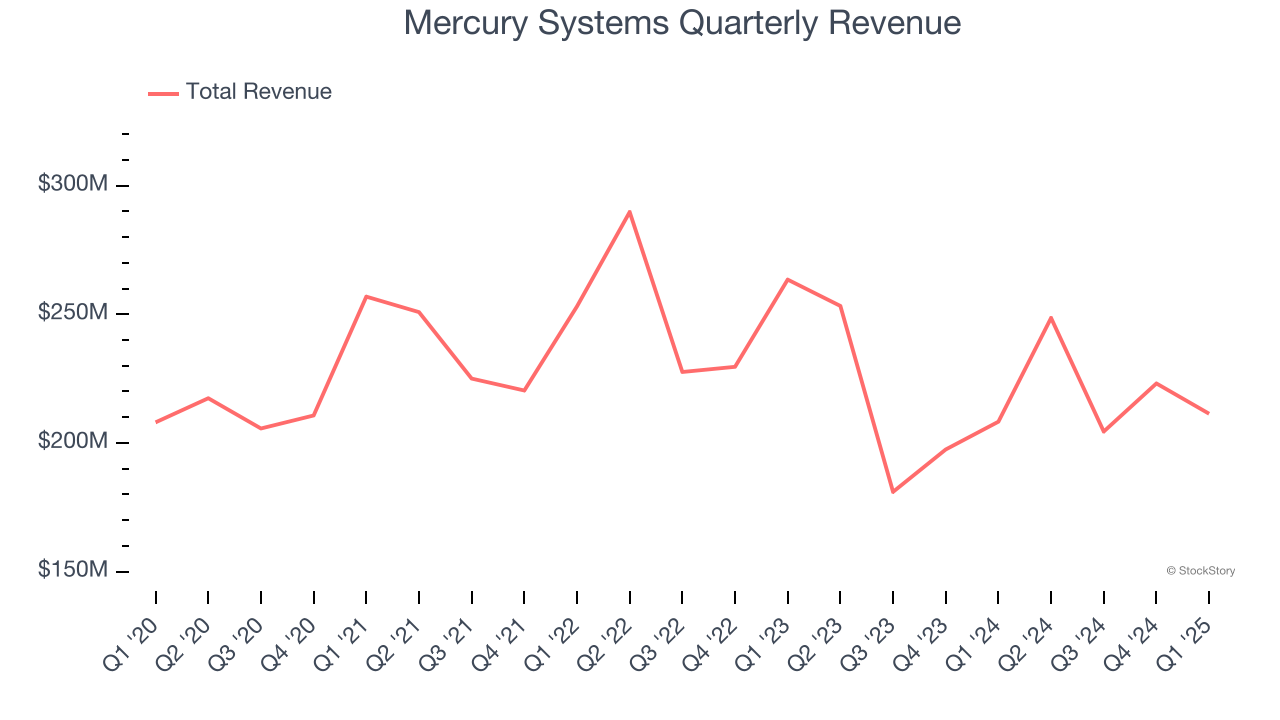
We at StockStory place the most emphasis on long-term growth, but within industrials, a half-decade historical view may miss cycles, industry trends, or a company capitalizing on catalysts such as a new contract win or a successful product line. Mercury Systems’s performance shows it grew in the past but relinquished its gains over the last two years, as its revenue fell by 6.3% annually. 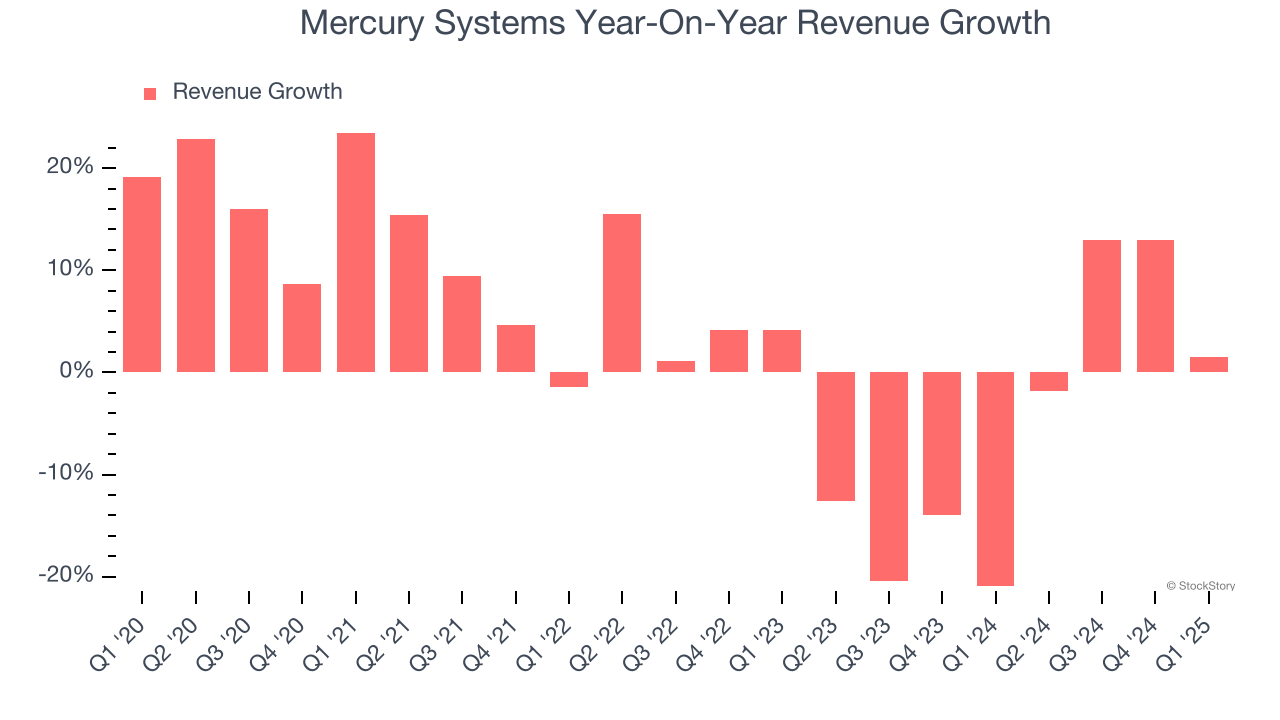
This quarter, Mercury Systems reported modest year-on-year revenue growth of 1.5% but beat Wall Street’s estimates by 4.6%.
Looking ahead, sell-side analysts expect revenue to grow 2.6% over the next 12 months. Although this projection indicates its newer products and services will spur better top-line performance, it is still below the sector average.
Unless you’ve been living under a rock, it should be obvious by now that generative AI is going to have a huge impact on how large corporations do business. While Nvidia and AMD are trading close to all-time highs, we prefer a lesser-known (but still profitable) stock benefiting from the rise of AI. Click here to access our free report one of our favorites growth stories.
Operating Margin
Mercury Systems’s high expenses have contributed to an average operating margin of negative 1.6% over the last five years. Unprofitable industrials companies require extra attention because they could get caught swimming naked when the tide goes out. It’s hard to trust that the business can endure a full cycle.
Analyzing the trend in its profitability, Mercury Systems’s operating margin decreased by 15.3 percentage points over the last five years. This raises questions about the company’s expense base because its revenue growth should have given it leverage on its fixed costs, resulting in better economies of scale and profitability. Mercury Systems’s performance was poor no matter how you look at it - it shows that costs were rising and it couldn’t pass them onto its customers.
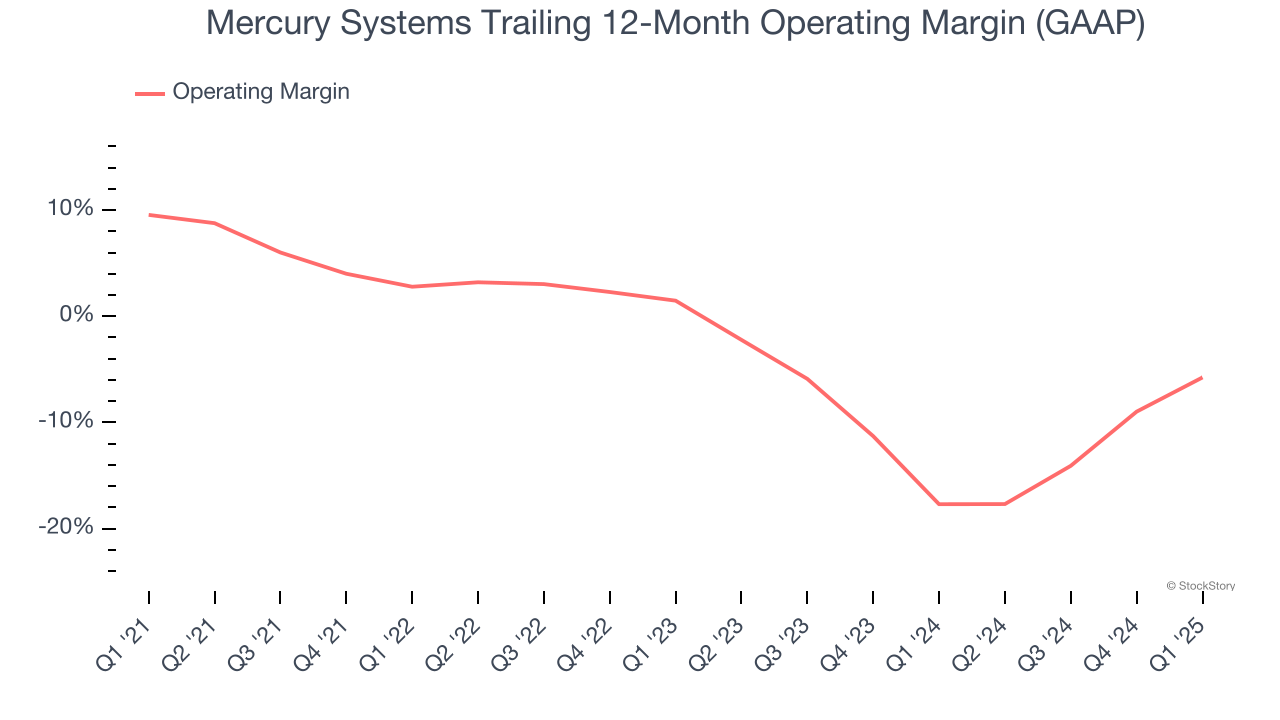
Mercury Systems’s operating margin was negative 8.2% this quarter. The company's consistent lack of profits raise a flag.
Earnings Per Share
We track the long-term change in earnings per share (EPS) for the same reason as long-term revenue growth. Compared to revenue, however, EPS highlights whether a company’s growth is profitable.
Sadly for Mercury Systems, its EPS declined by 28% annually over the last five years while its revenue grew by 3.3%. This tells us the company became less profitable on a per-share basis as it expanded.
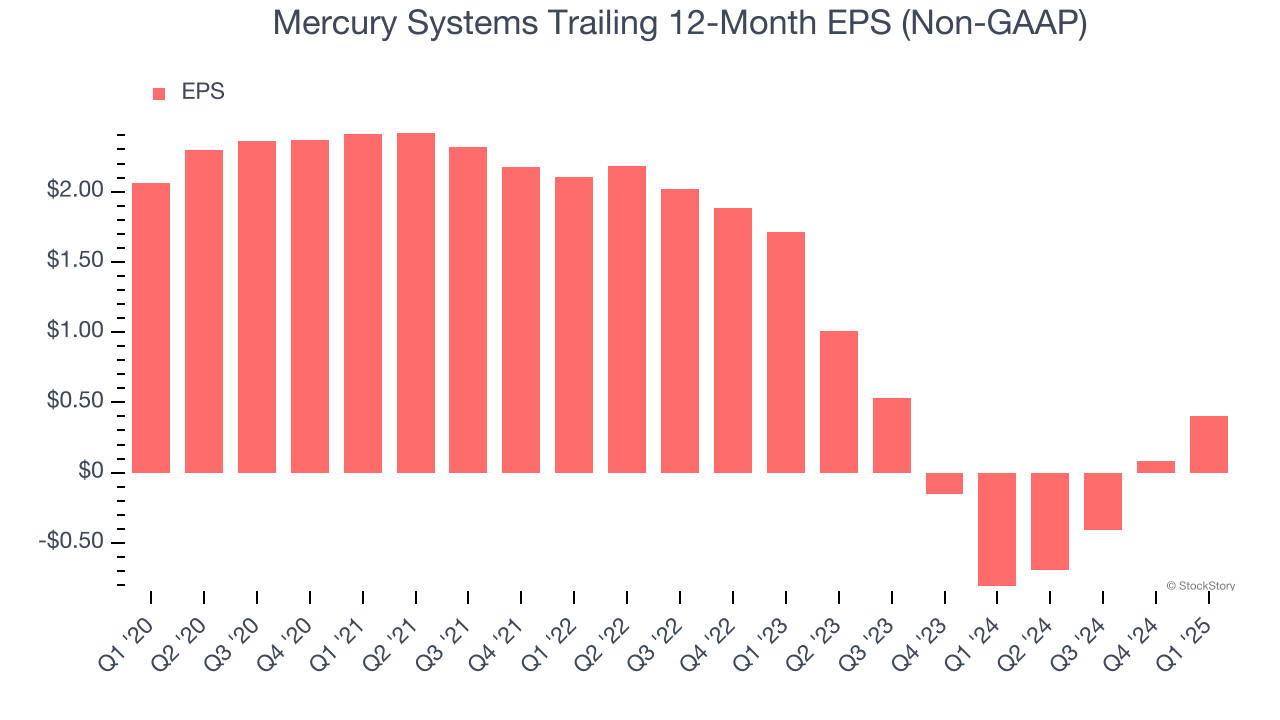
We can take a deeper look into Mercury Systems’s earnings to better understand the drivers of its performance. As we mentioned earlier, Mercury Systems’s operating margin improved this quarter but declined by 15.3 percentage points over the last five years. Its share count also grew by 7.7%, meaning the company not only became less efficient with its operating expenses but also diluted its shareholders. 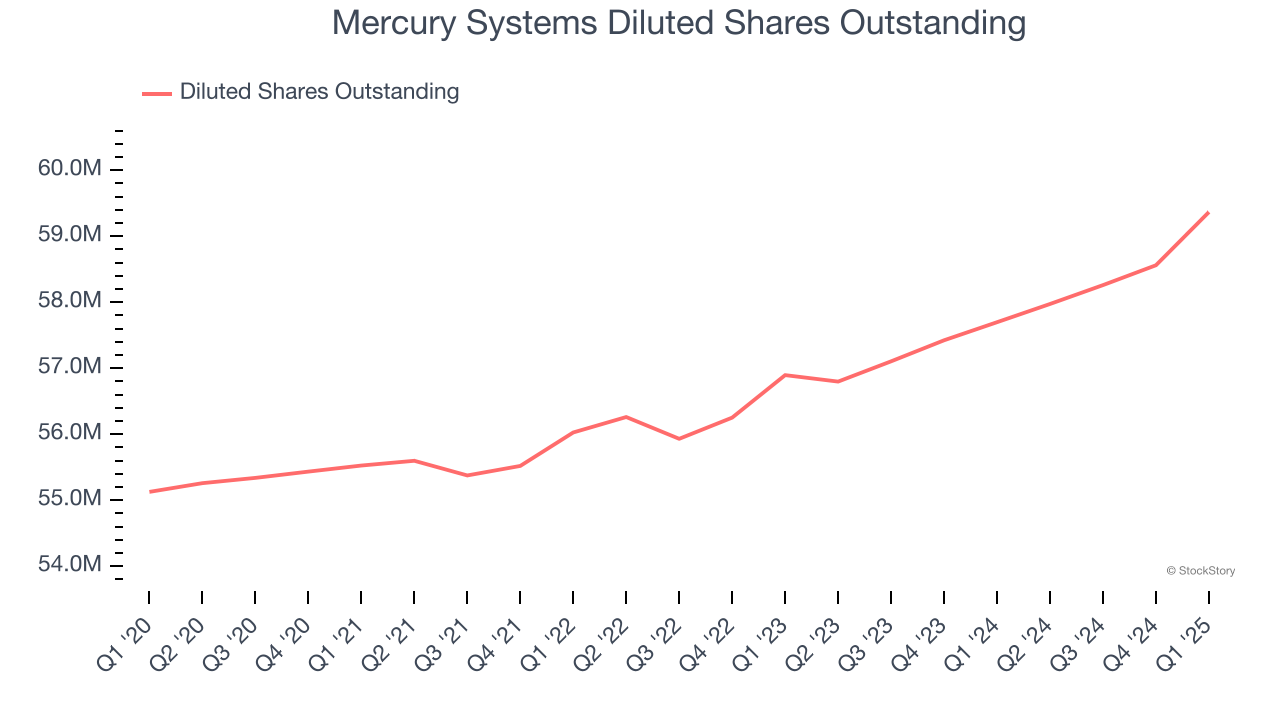
Like with revenue, we analyze EPS over a more recent period because it can provide insight into an emerging theme or development for the business.
For Mercury Systems, its two-year annual EPS declines of 51.6% show it’s continued to underperform. These results were bad no matter how you slice the data.
In Q1, Mercury Systems reported EPS at $0.06, up from negative $0.26 in the same quarter last year. Despite growing year on year, this print missed analysts’ estimates. Over the next 12 months, Wall Street expects Mercury Systems’s full-year EPS of $0.40 to grow 75.3%.
Key Takeaways from Mercury Systems’s Q1 Results
We were impressed by how significantly Mercury Systems blew past analysts’ revenue expectations this quarter. We were also glad its EBITDA outperformed Wall Street’s estimates. On the other hand, its EPS missed significantly. Overall, we think this was a mixed quarter with some key areas of upside. The stock remained flat at $50.41 immediately following the results.
So do we think Mercury Systems is an attractive buy at the current price? We think that the latest quarter is only one piece of the longer-term business quality puzzle. Quality, when combined with valuation, can help determine if the stock is a buy. We cover that in our actionable full research report which you can read here, it’s free.







